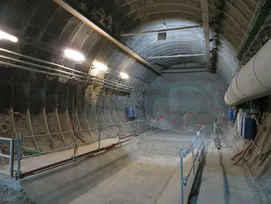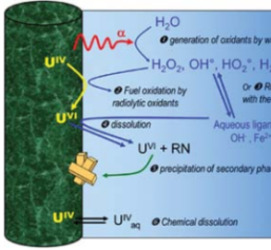Geological Disposal of Radioactive Waste in Clay
Keeping future generations safe from today’s nuclear waste relies on this waste being effectively isolated for all time. Clay rocks, or rocks with a high clay content, offer promising isolation properties over time periods that are as long as the age of their host geological formations. Constructing a repository in such material does not significantly change the clay’s isolation properties, which is a great advantage. Isolation is a function of the interplay between the slow release of radionuclides from the waste, the diffusion-controlled radionuclide migration, the establishment of a reducing geochemical environment, and the weak solubility and strong retention of the most toxic radionuclides on clay minerals and on additional engineered barrier materials.
Geological Disposal of Radioactive Waste in Clay Read More »




